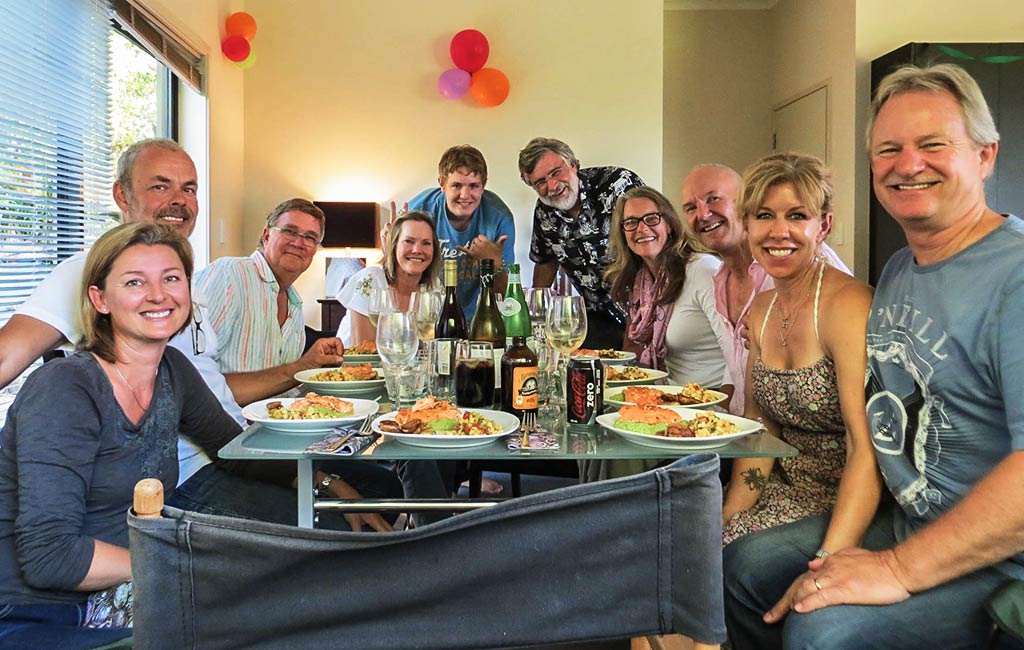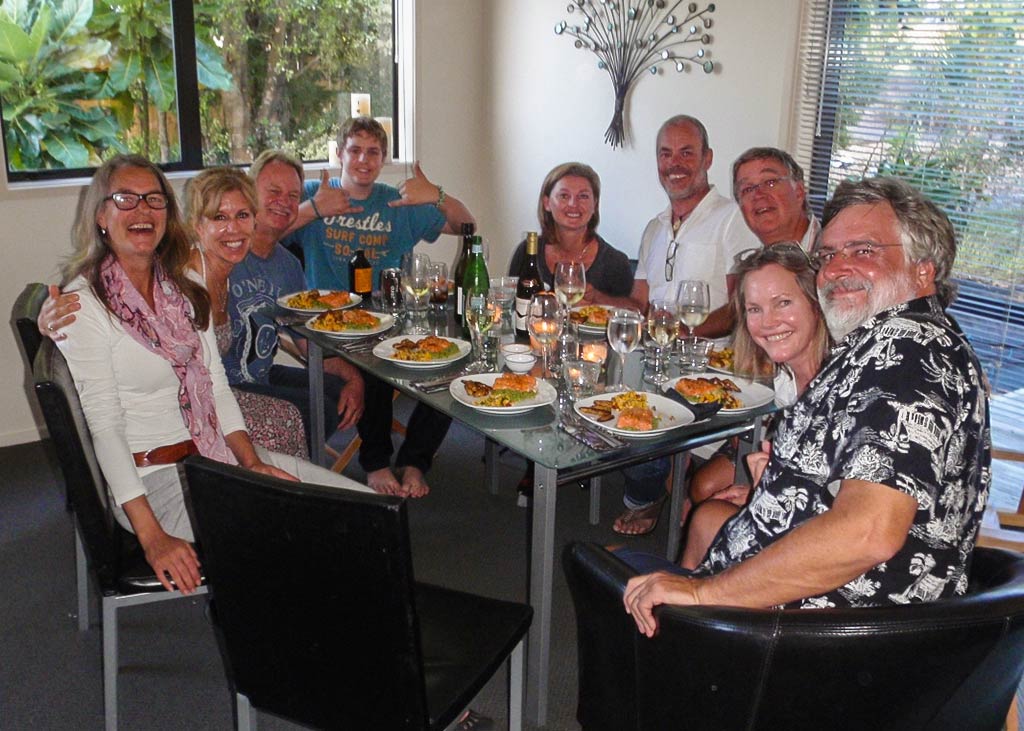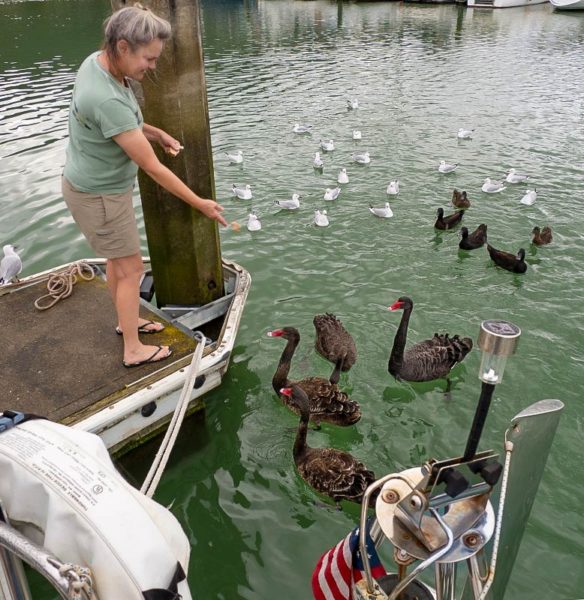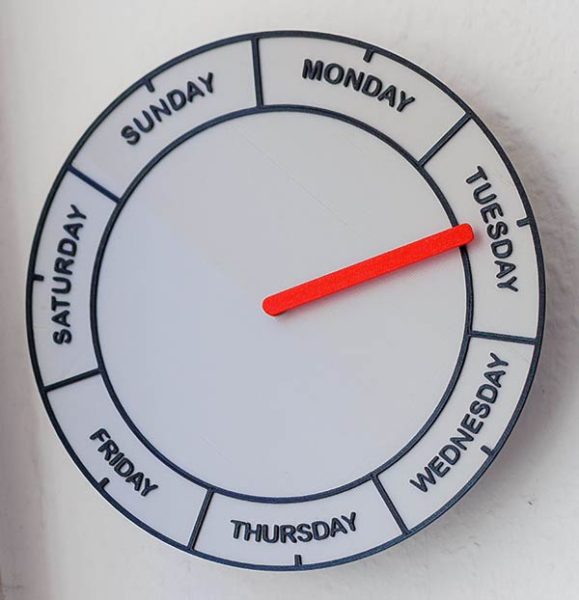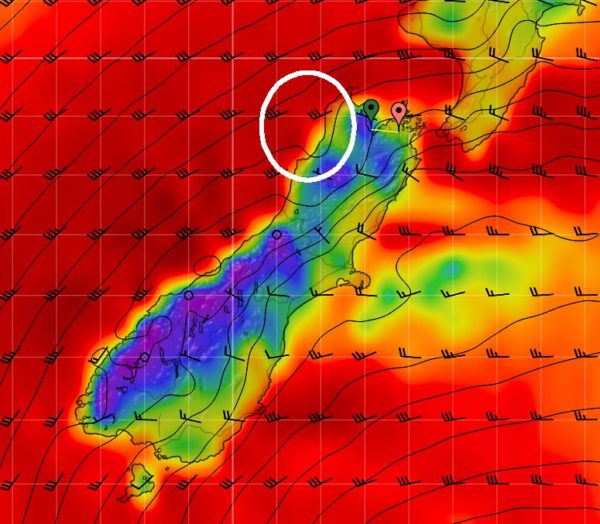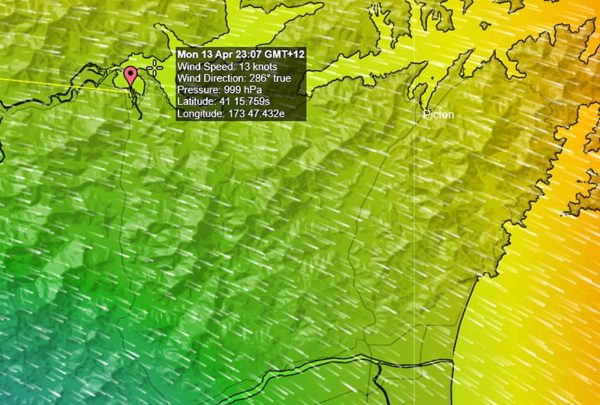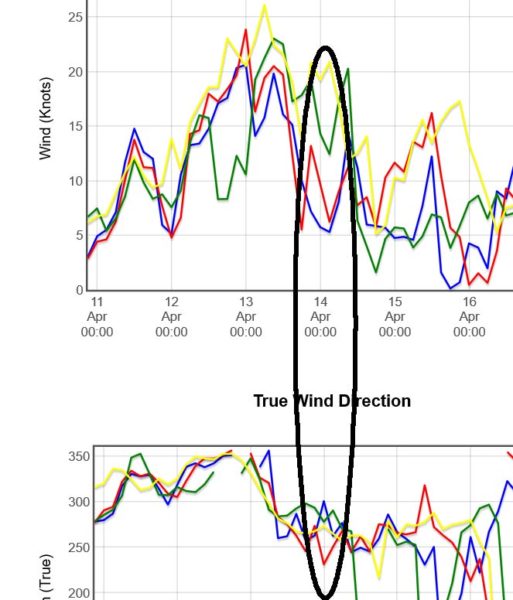And now, back to 2014…
January 21, 2014
How nice to be back among some of our cruising family for a birthday gathering. As this party demonstrated, the South Pacific’s Puddle Jump cruising fleet wasn’t just divided by year, but by month. This wasn’t a “Class of 2012” gathering so much as a “May of 2012” group of cruisers who didn’t arrive in the Marquesas until late that particular month, most specifically landing at Hiva Oa.
In a strange way cruising, because of the stresses involved and the often steep learning curve of a major ocean passage, can take on some of the qualities of time in military combat. In movies, characters ask each other what branch of the military they were in, what battalion, where they were stationed, etc., as a way of finding common ground.
“I was in the Army, 75th regiment, 2nd battalion, in Kandahar,” is a type of bonding I can’t relate to having never been in in the military. But I can relate to the late-season Class of 2012, the sharing of information relevant at the time, learning from each others’ experiences, both triumphs and mistakes, and finally the mysterious circumstances in French Polynesia that season which allowed a few cruisers to sneak-overstay in Bora Bora (some scandal with the military police grounded their patrol boats for awhile). This was followed by the more arduous-than-advertised ocean crossing from French Polynesia to various islands in the Pacific and then to Tonga.
Earlier-arrival cruisers from that year will remember the terrible squall that hit the anchorage full of attendees of the big Puddle Jump party, quite an early and unwelcome lesson about the dangers of a crowding into an area with dubious holding. Then the fun of being in Neiafu, Tonga, for their regatta, something many of the later cruisers missed.
Meanwhile, we all remember the December storm of 2012 that affected boats crossing from Tonga to New Zealand, and the stress of trying to figure out how best to manage that potentially difficult passage.
As I am writing this years later, I can add some perspective about differences between cruising seasons in the South Pacific. First off, there’s no doubt about it, that first season making the big ocean crossing is the most intense and is often breeding ground for lifelong friendships as there’s definitely a “life during wartime” element to the venture, a sense of being in the same “foxhole.”
I think for a lot of us Puddle Jumpers, after that first year making our way to (and through) French Polynesia, across the Pacific to Tonga, then making the final big jump to New Zealand, subsequent seasons are much less intense and can better be compared to high school.
In any given season, there’s a certain feeling of rank that comes with being an early arrival vs. a later arrival. For example, our first season arriving in Fiji after many of the other cruisers, I’d say the Seniors were in Fulaga, the Juniors in Salia or Albert Cove, the Sophomores in Viani Bay, and the Freshmen (our group) were wandering around Savusavu wondering “WTF?”
Fiji was harder than other areas as it lacked a good guidebook, but even now when we go to a new island group, we tend to be late arrivals and feel like freshmen all over again, hearing about people who are in this place and that, well ahead of us, doing neat-sounding things and full of mysterious knowledge that we don’t yet have. There’s always some stress with this as it seems the “best” place is where we aren’t, some place ahead. Then when we get to that place we hear, “Oh, have you been to so-and-so yet? No? Well then you’re totally missing out!” Losers! (I added that last bit because that’s how I always feel.)
But I research my guidebooks (both for cruising and for land travelers) while Rich handles the charts and routes, and we benefit from tips and tidbits passed down from the upper classmen. And five or six months later, as we complete the season, I can always look back and think that was easier than it sounded and feel satisfied that we figured it all out and did the things that, for us, were must-sees and discarded the things that didn’t matter. Although I’ll add that no matter how much we see and do, someone always comes along and says, “Did you get to this upside down rock with a cannibal petroglyph thingy and a puka shell? No? Then you missed out!” (Losers!)
Anyway, I’ve wandered off topic. Today was Lisa’s birthday, and a bunch of us had gathered to celebrate the evening.
While that night had its own resonance, this general scenario is played out time and time again within the cruising community, whether people are piling onto a boat in an anchorage, reuniting at a yachtie bar, having a good-bye (or welcome back) party at a marina, sitting on a beach with a bonfire, making the pilgrimage to a village for a big festival, or in this case, going to a rental house in our host country.
Basically we arrive and are greeted by friendly and familiar faces. Wine, tea, coffee, or what-have-you is poured, someone is always cooking or preparing food, and all new arrivals are greeted with enthusiasm, particularly by their closest companions at the gathering. There is always so much news and information to be shared: “How was Fiji?” “How was Australia?” “What’s going on back in America?” “You went to Vietnam?” “You went to Bali?” “You stayed in New Zealand and toured the South Island?” How was it?” “You saw our mutual friends?””Where the heck are they and how are they doing?” “How are you doing?” “What are your plans?” “What are my plans? Still haven’t decided.”
Everyone chats like magpies as there’s so much to catch up on, so much to share, and so much comparing of notes as we all are usually in the decision-making process. The talk is excited, then more calm, then more excited when new arrivals appear. And so goes another cruiser reunion.
In our case, appetizers were served, then dinner, much of the cooking and planning done by Iris on Aleris, who did a masterful job. It was great food, a great group, and a good feeling flowed. A very fun and enlightening game that came before dinner was having each of us write out the top five items on our bucket lists and share them with the group over dinner. I won’t go into the results, but how fun, surprising, and idea-inspiring to hear everyone’s lists, especially from a group of cruisers already living a big bucket-list item!
Glasses were re-filled, and more discussions and debate ensued. Being “wartime buddies,” cruisers often feel more free to delve into things more honestly and personally than we might in “polite society.” We’re not talking about the latest Broadway play Hollywood scandal, or personal acquisition, but instead are being honest about personal challenges and quests. After all, we’ve shared a foxhole and have seen each other through good and bad situations and moods, and have all passed into the intimacy of, “I knew you when…”even if we haven’t known each other for that long. “I knew you when…” is a powerful thing, after all.
After a great evening, we headed back to our hotel but returned for a breakfast gathering and final good-bye the next morning, not knowing when we’d see each other again, but knowing that we would. And so it goes in the world of cruising.
For now, Rich and I were heading back to Auckland, but I had planned a couple of stops on the way. –Cyndi

